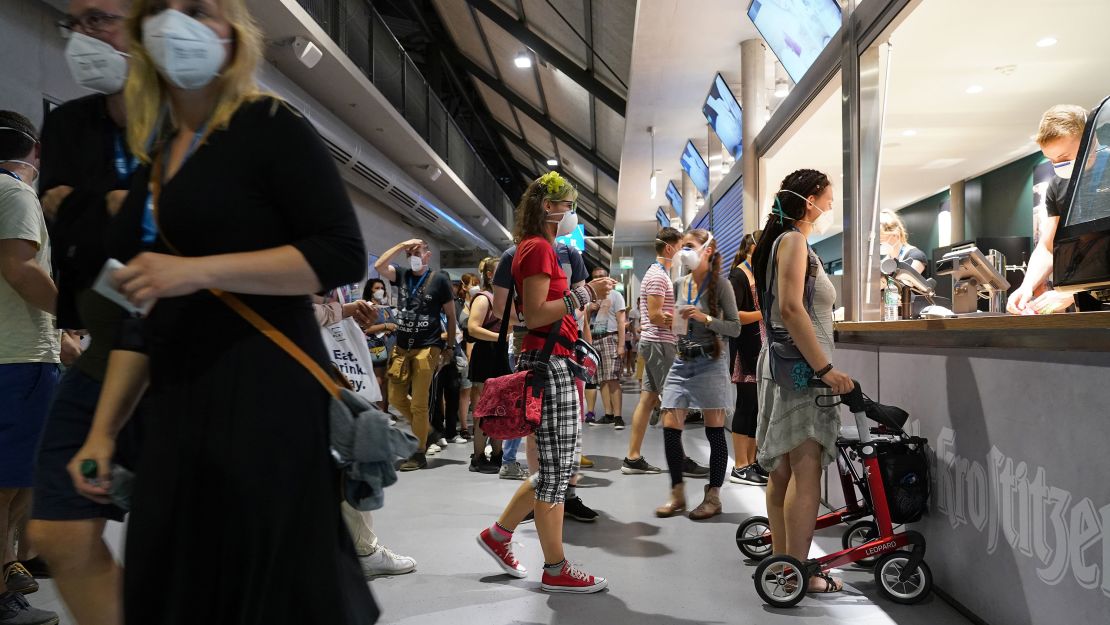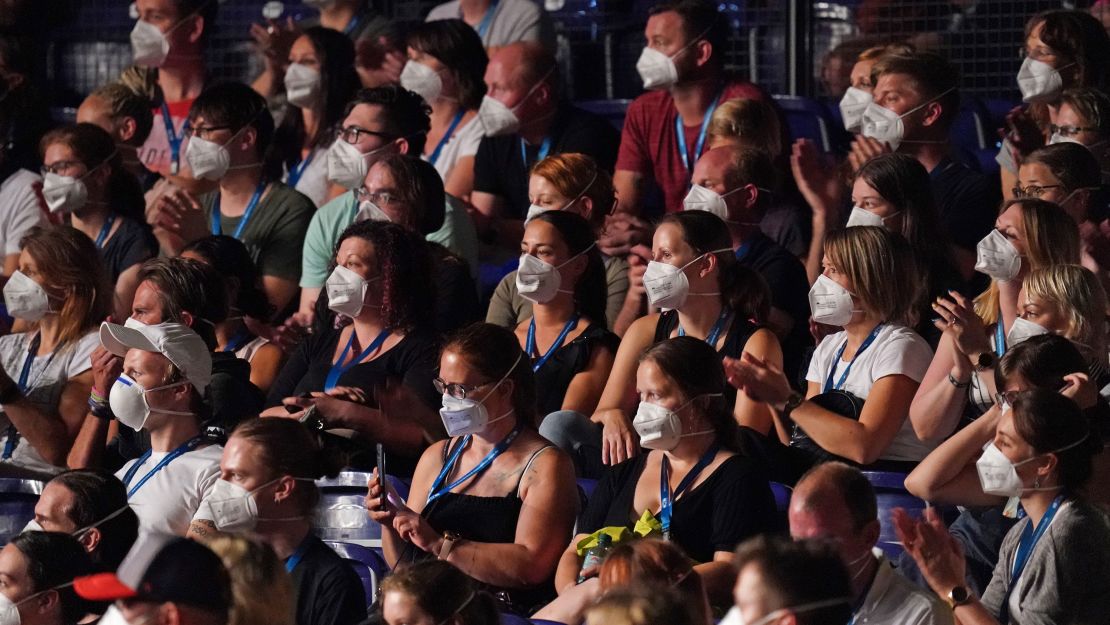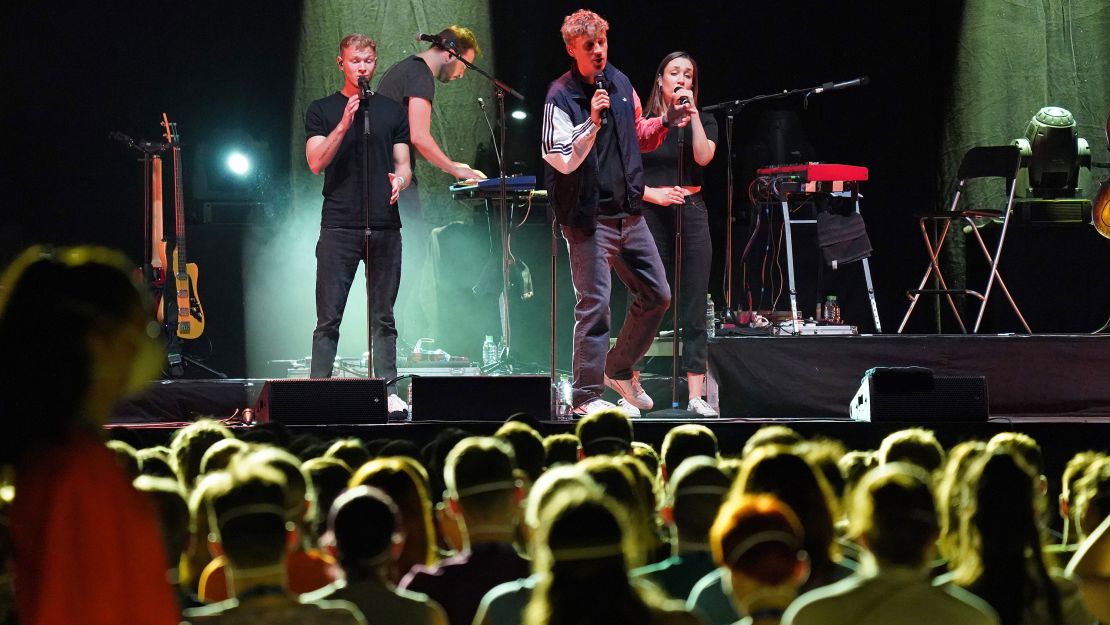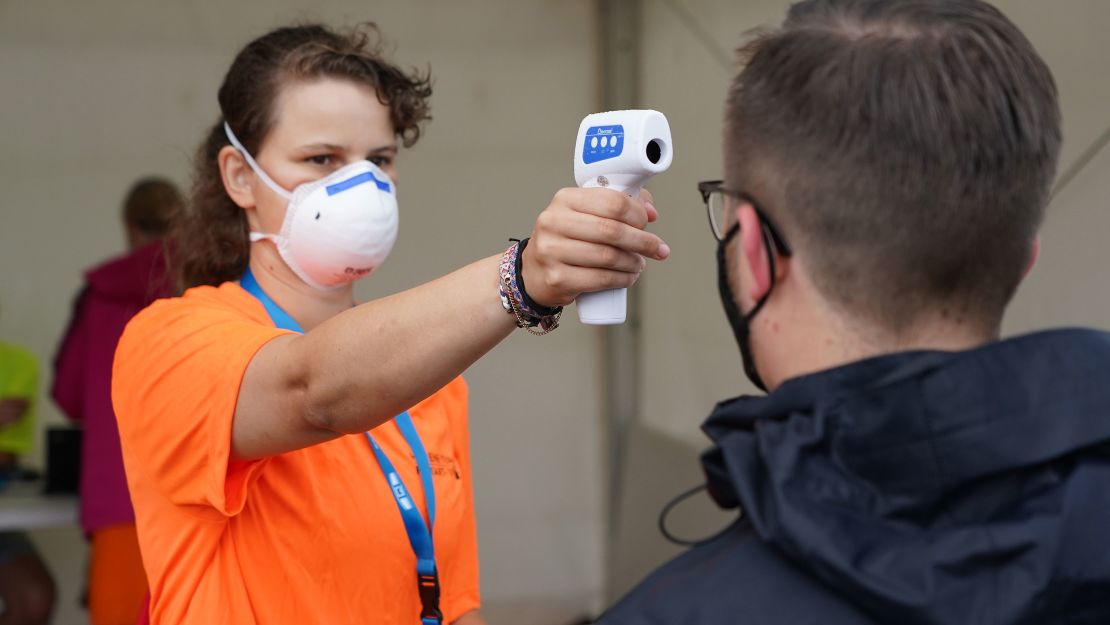Ever since the coronavirus pandemic shuttered clubs, bars and concert halls around the world, music fans have been dreaming of the day they can once again visit a busy, sweaty venue to enjoy a gig with friends.
With infection rates rising in many European countries, this dream could be far off for now. But some music fans in Leipzig, Germany, have been given the chance to rock for a day in the name of science – with the help of some glowing hand sanitizer and electronic trackers.
Researchers in the German city of Leipzig staged a 1,500-person experimental indoor concert on Saturday to better understand how Covid-19 spreads at big, busy events, and how to prevent it.
At the gig, which featured a live performance from musician Tim Bendzko, fans were given respiratory face masks, fluorescent hand gel and electronic “contact trackers” – small transmitters that determine the contact rates and contact distances of the individual experiment participants.

Using data from the contact trackers, scientists from The University of Halle will monitor the number “critical contacts” had by each participant during specific times and locations, while the residue left by fluorescent hand gel will identify frequently touched surfaces. Researchers hope to use the data to find ways to bring big events, including sports, back safely.
Professor Michael Gekle, the dean of the university’s medical faculty and a professor of physiology, told CNN the experiment was being conducted to better prepare authorities on how to conduct events in the upcoming autumn and winter seasons.

“We cannot afford another lockdown,” he said. “We have to gather the data now in order to be able to make valid predictions,” he said.
“There is no zero risk if you want to have life. We want to give the politicians a tool in order to decide rationally whether to allow such an event or not. That means they have to have the tool to predict how many additional infected people such an event will produce,” he said.
Researchers directed volunteers to run three scenarios – one that simulated a concert pre-coronavirus, a second simulating a concert during the pandemic, with improved hygiene measures in place, and a third, with reduced participants. Scientists will gather the data, apply a mathematical model, and evaluate the hygiene interventions, with conclusions ready by the end of the year.

Researchers believe this is the first time an experiment of this scale has taken place in Europe, but say that different considerations would have to be applied depending on the type of event, the behavior of concert goers and whether patrons were allowed to consume alcohol.
“Of course, a concert with Rammstein would be different,” he said.
Gekle told CNN that due to a low prevalence of the virus in the states of Saxony and Lower Saxony, participating in the study was low risk for volunteers, who underwent coronavirus testing 48 hours before participation, and were wearing masks during the show. “It’s safer than flying to Majorca,” he said.
The number of coronavirus infections in Germany has been climbing again since the end of July. On Saturday, the country saw its highest number of daily infections since April 26, with 2,034 new cases of Covid-19, according to Robert Koch institute, the country’s center for disease and control.
The experiment may have been controlled, but for some in the crowd – despite the lack of alcohol – it felt like a return to normality.

“This was our first real applause from the audience in months,” Bendzko told CNN. “The atmosphere is surprisingly good – it almost felt like a real concert.
“I wish that it will be possible to play at big concerts again someday soon,” he said. “But we all understand that we now have to live with the virus and we have to take a certain risk.”
Elli Blesz, 20, from Leipzig told CNN: “The atmosphere was really great, we all enjoyed the music – it was nice to listen to live music after six months.”
And Kira Stuetz, a 26-year-old student who attended the concert with her husband, said: “It was a little crazy.” Recalling one of the pre-coronavirus simulations, where audience members sat together, she said that “at first it almost felt wrong all people came so close together. We thought this ‘is a dream’ because it’s not allowed to be sitting together so close! But then it was really cool. I could not believe it that we were at a real concert again!”
Organizers around the world have been dipping their toes into the water to see when and how live events can be brought back in a world still suffering from the coronavirus pandemic – in the UK, event organizers trialled concerts at an outdoor, purpose-made socially distant concert venue, where patrons sat in small groups on distant, raised platforms.
Some venues are experimenting with virtual events, drive-through concerts, mandated personal protective equipment, or temperature checks on arrival.
Correction: A previous version of this story misstated the number of people who participated in the experimental indoor concert. It was 1,500.
Nadine Schmidt reported from Leipzig, Germany. Amy Woodyatt wrote from London.
